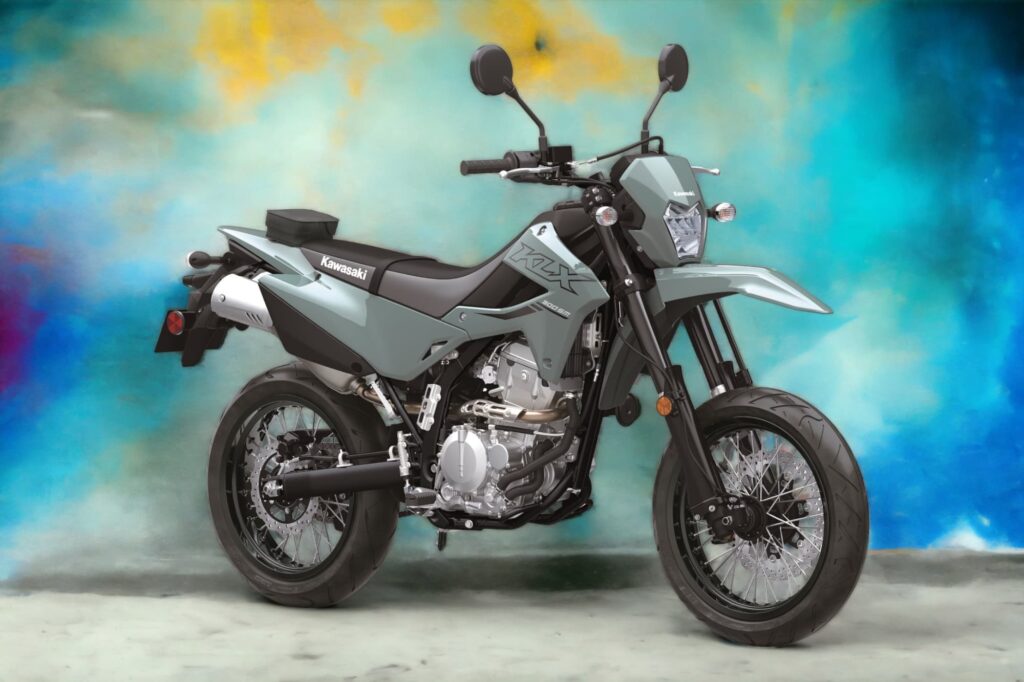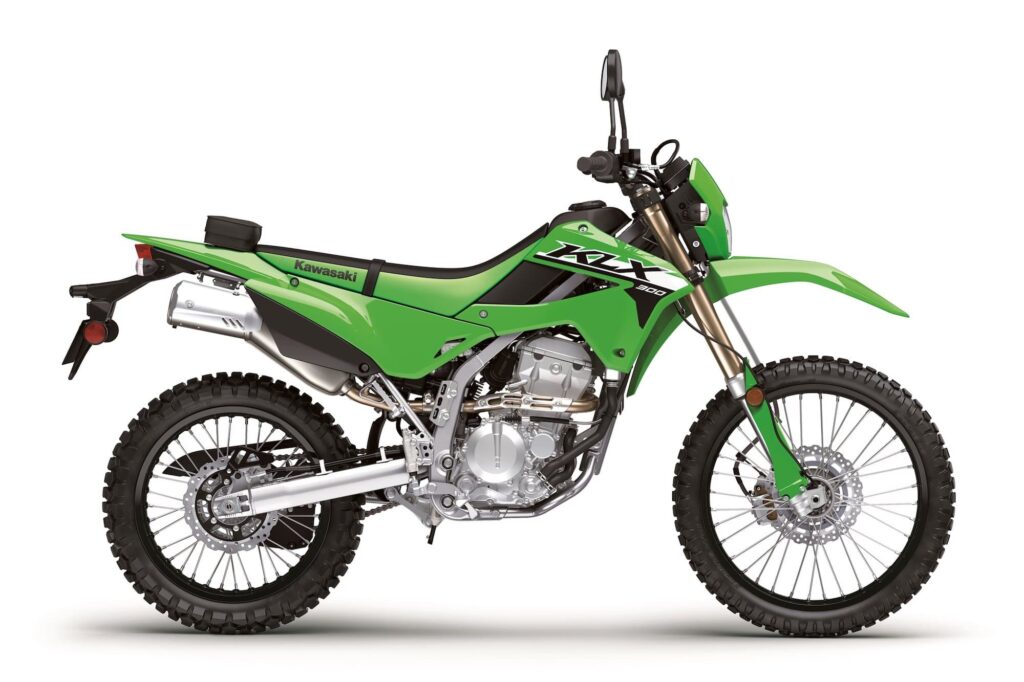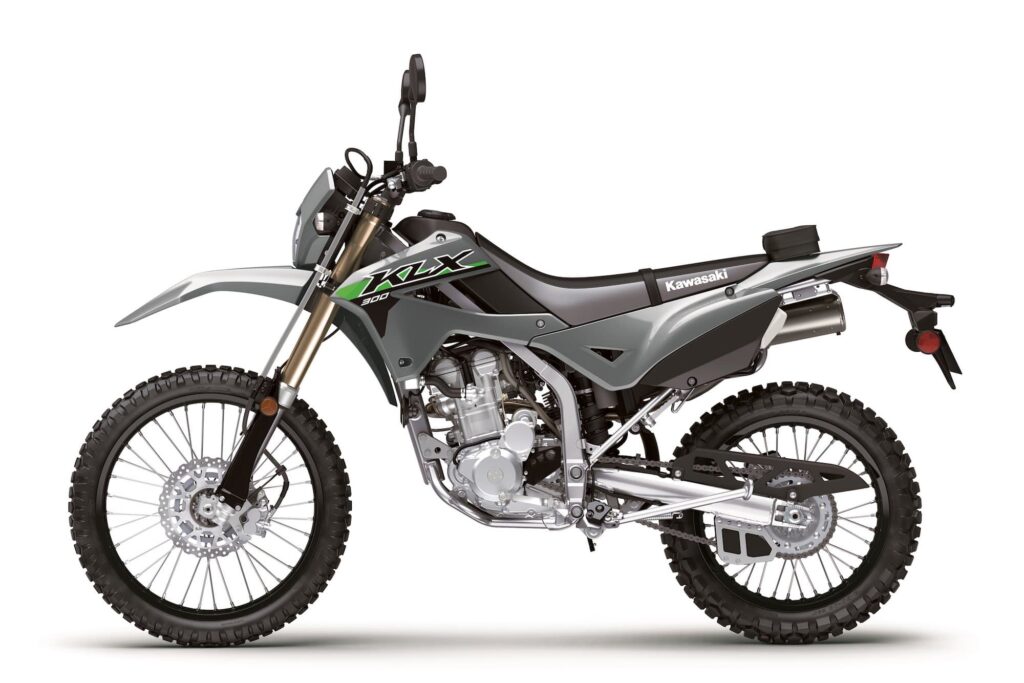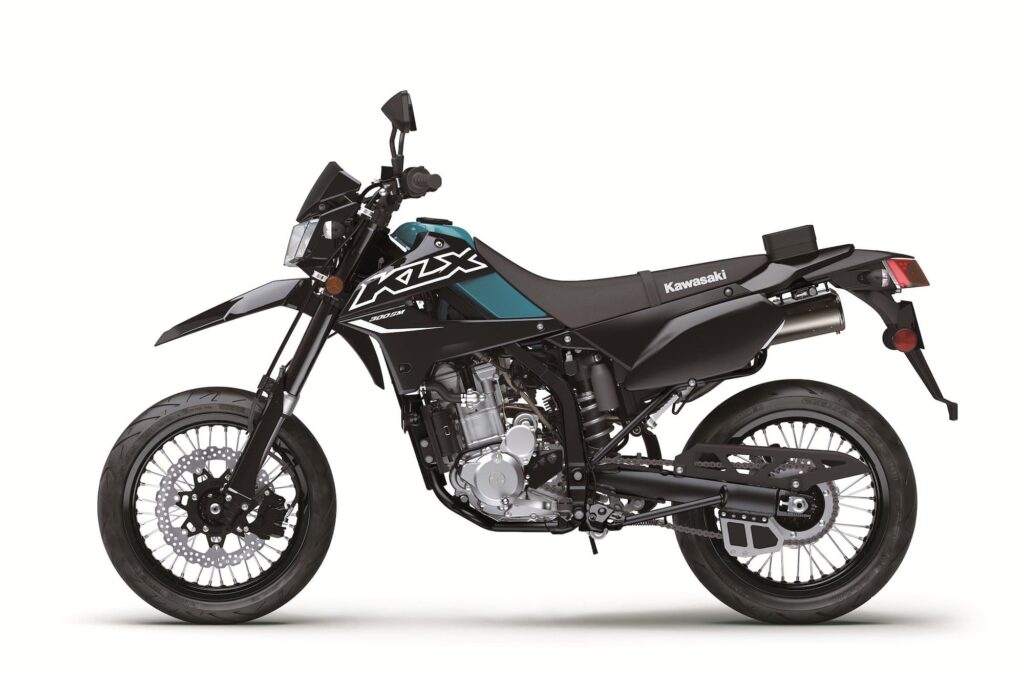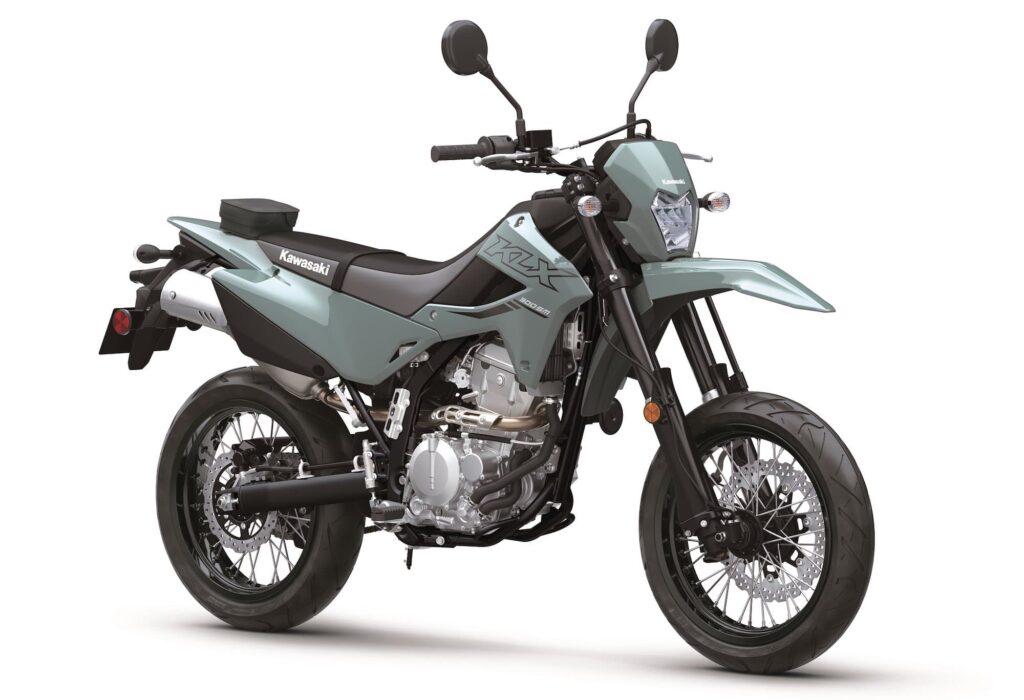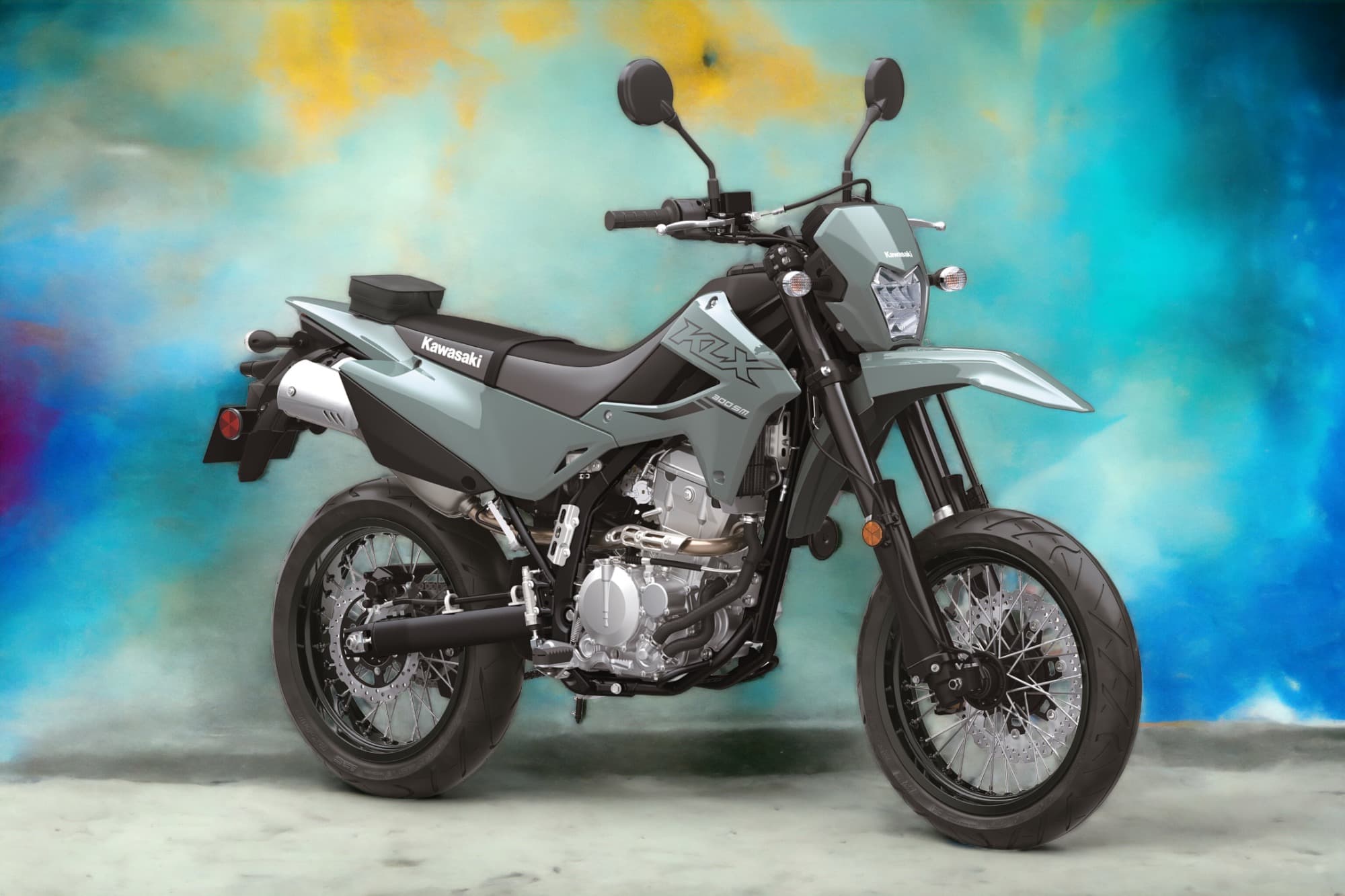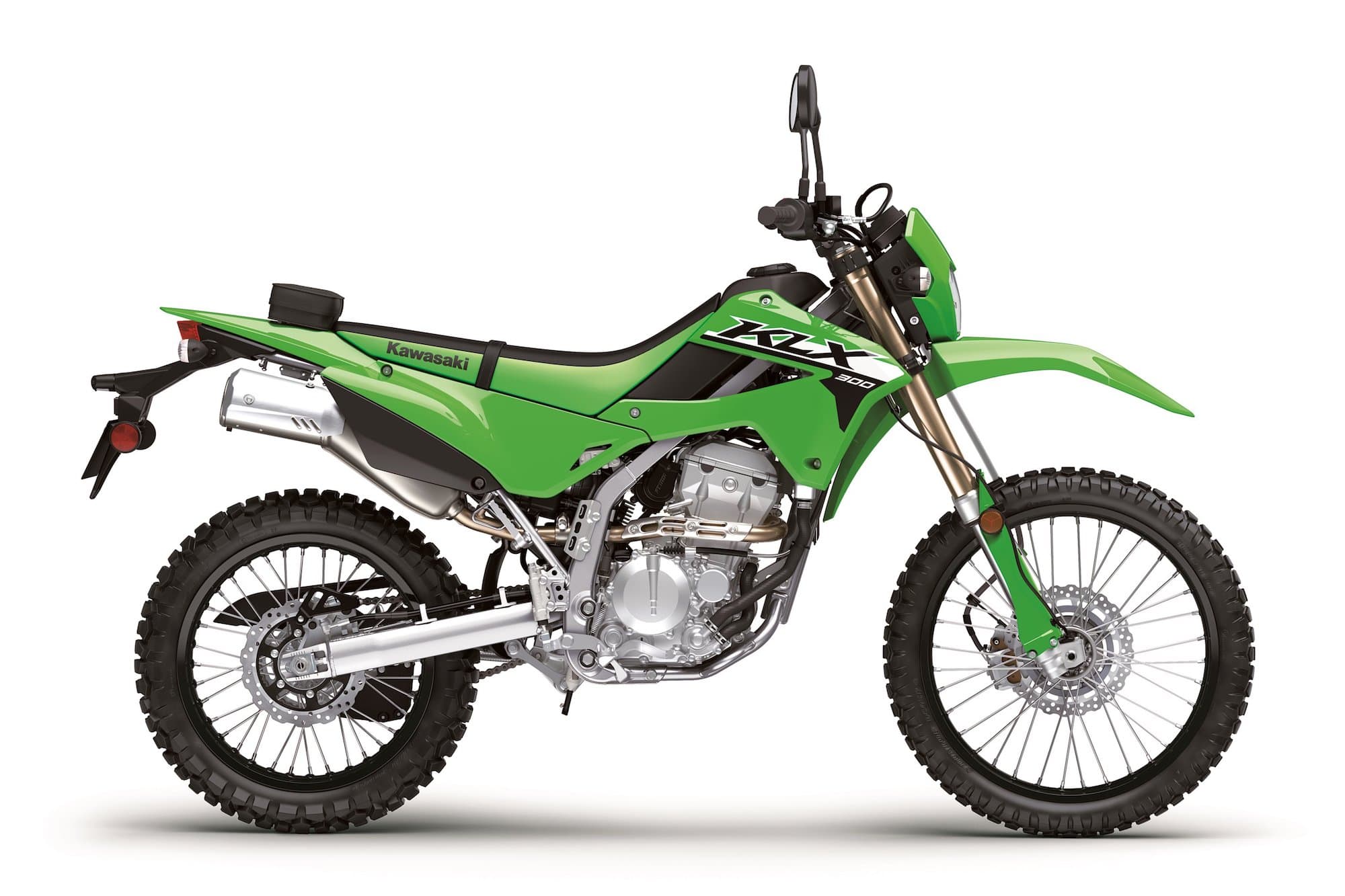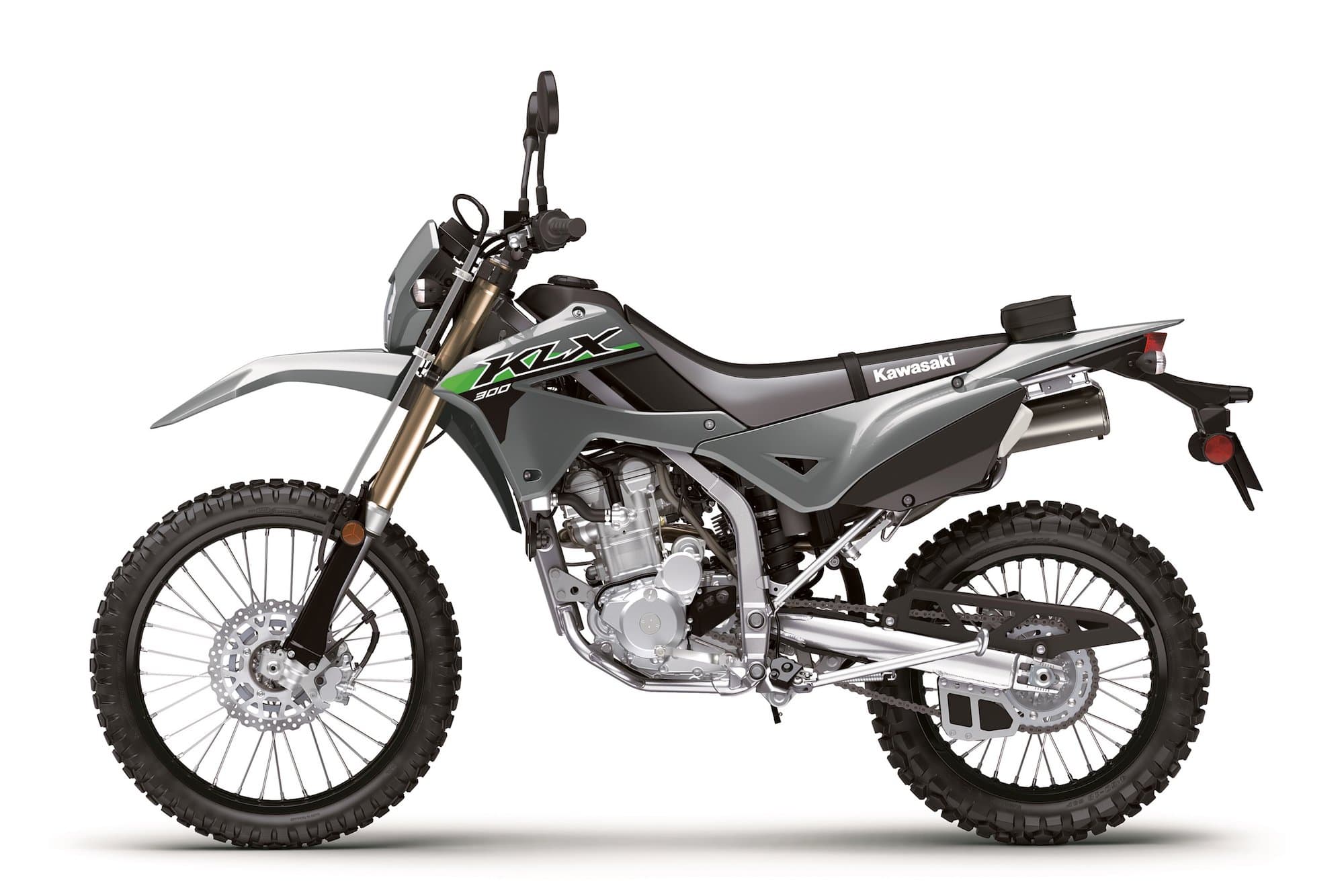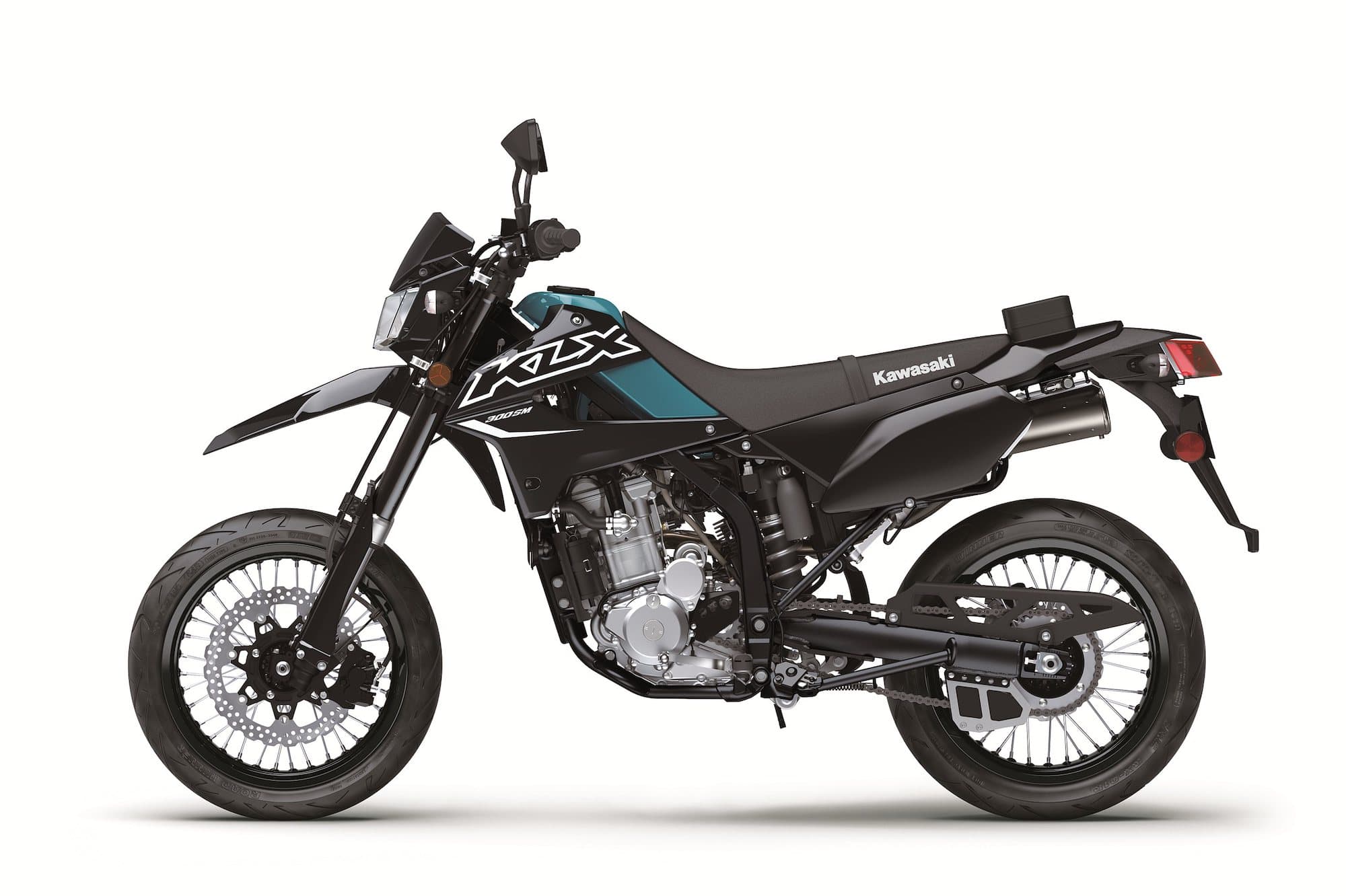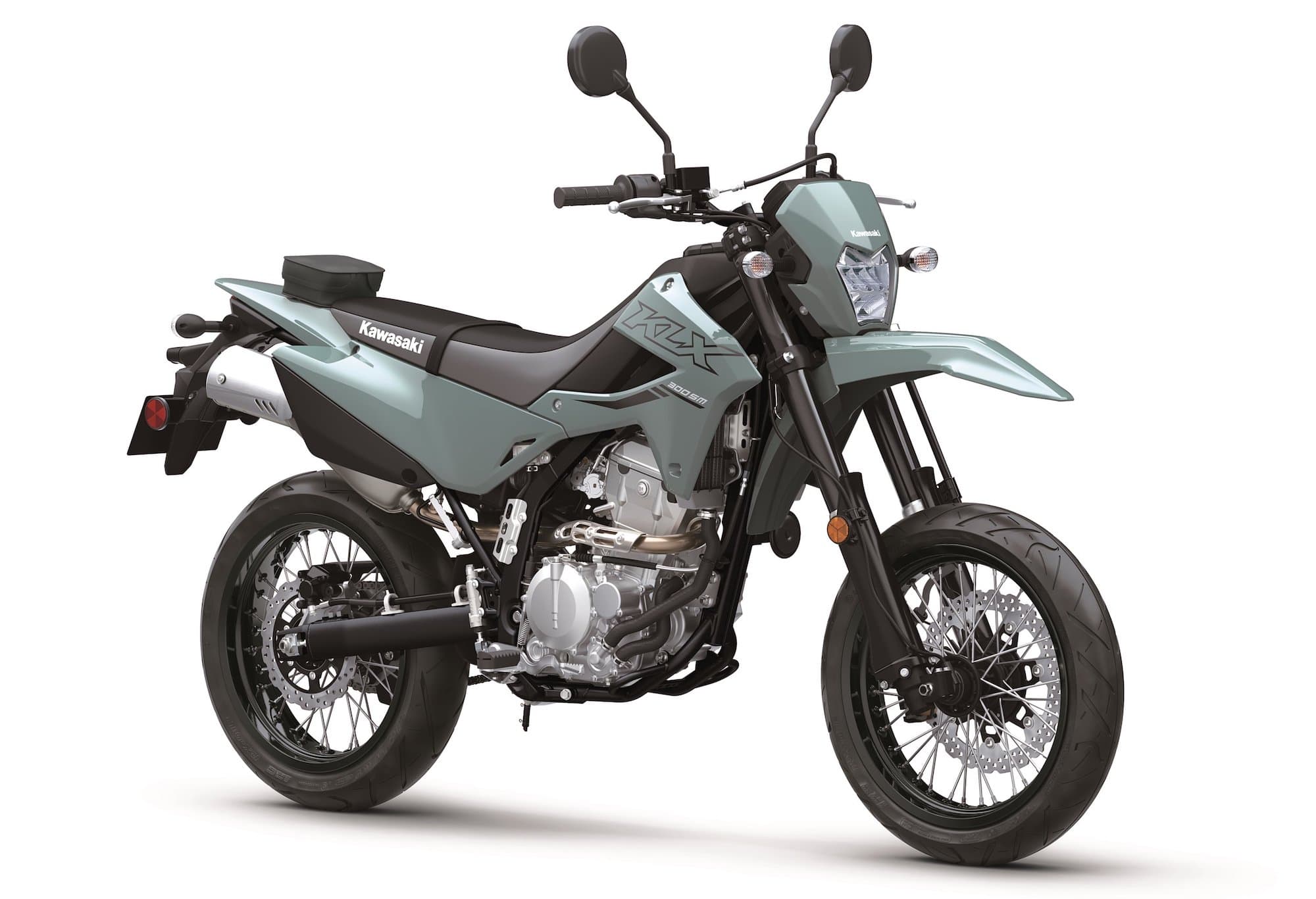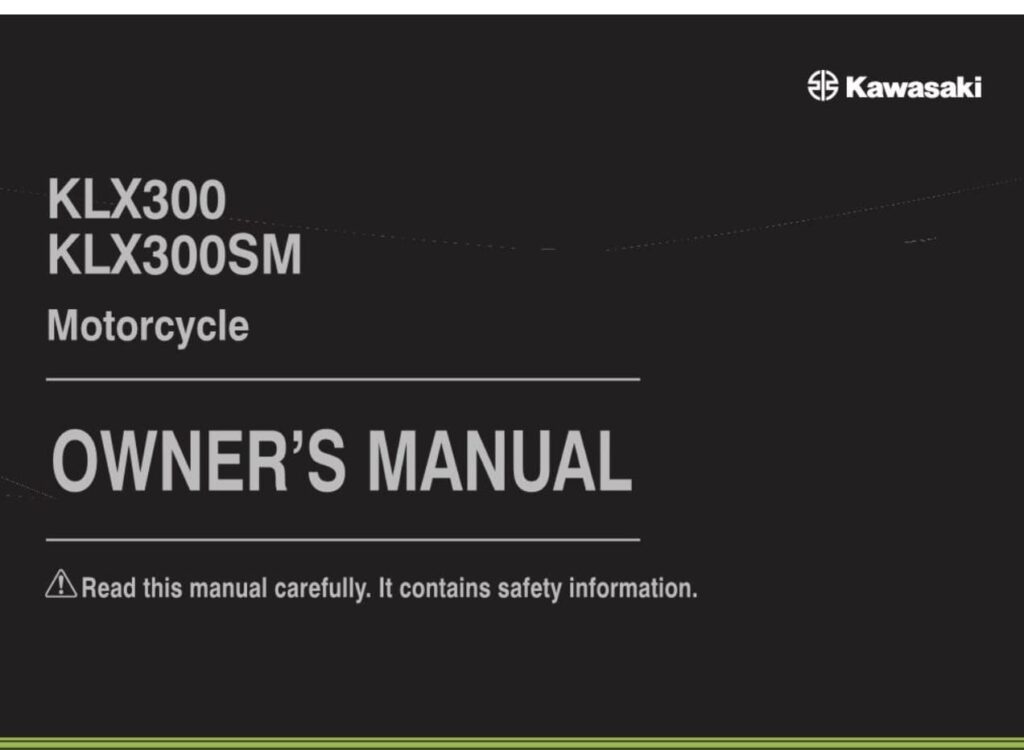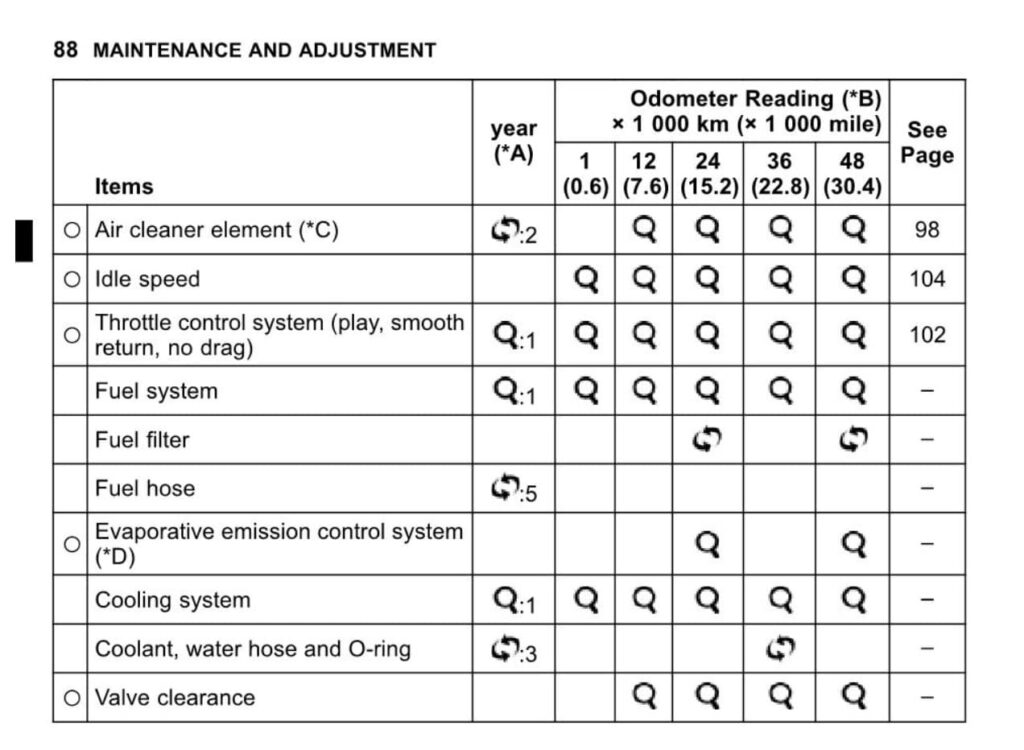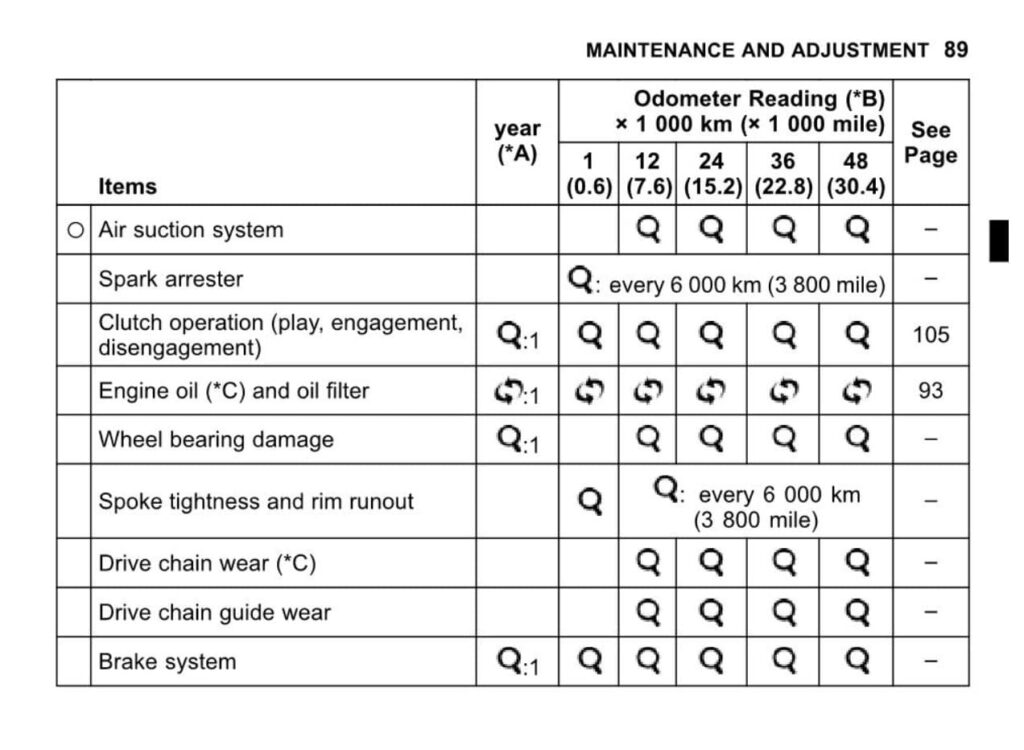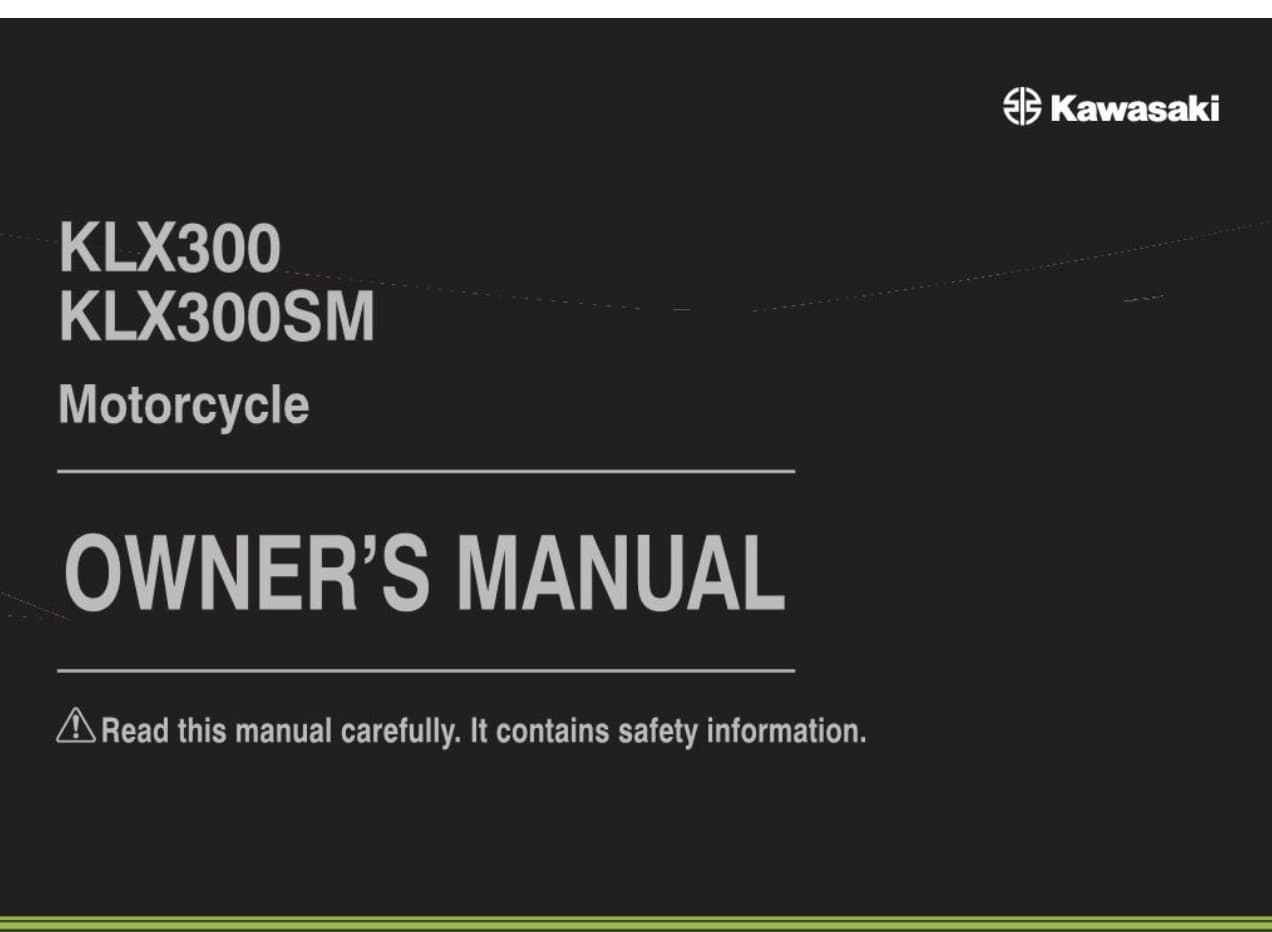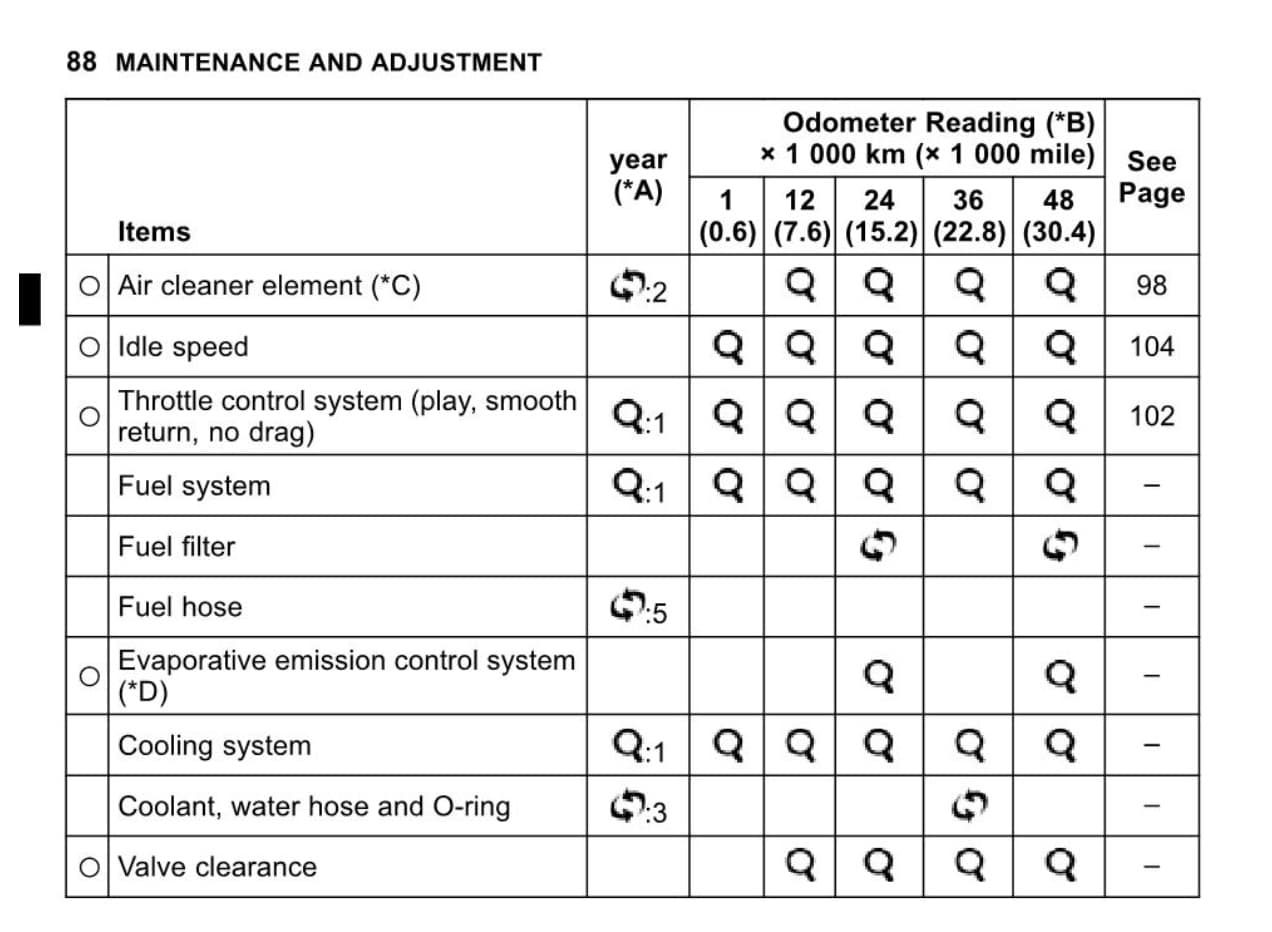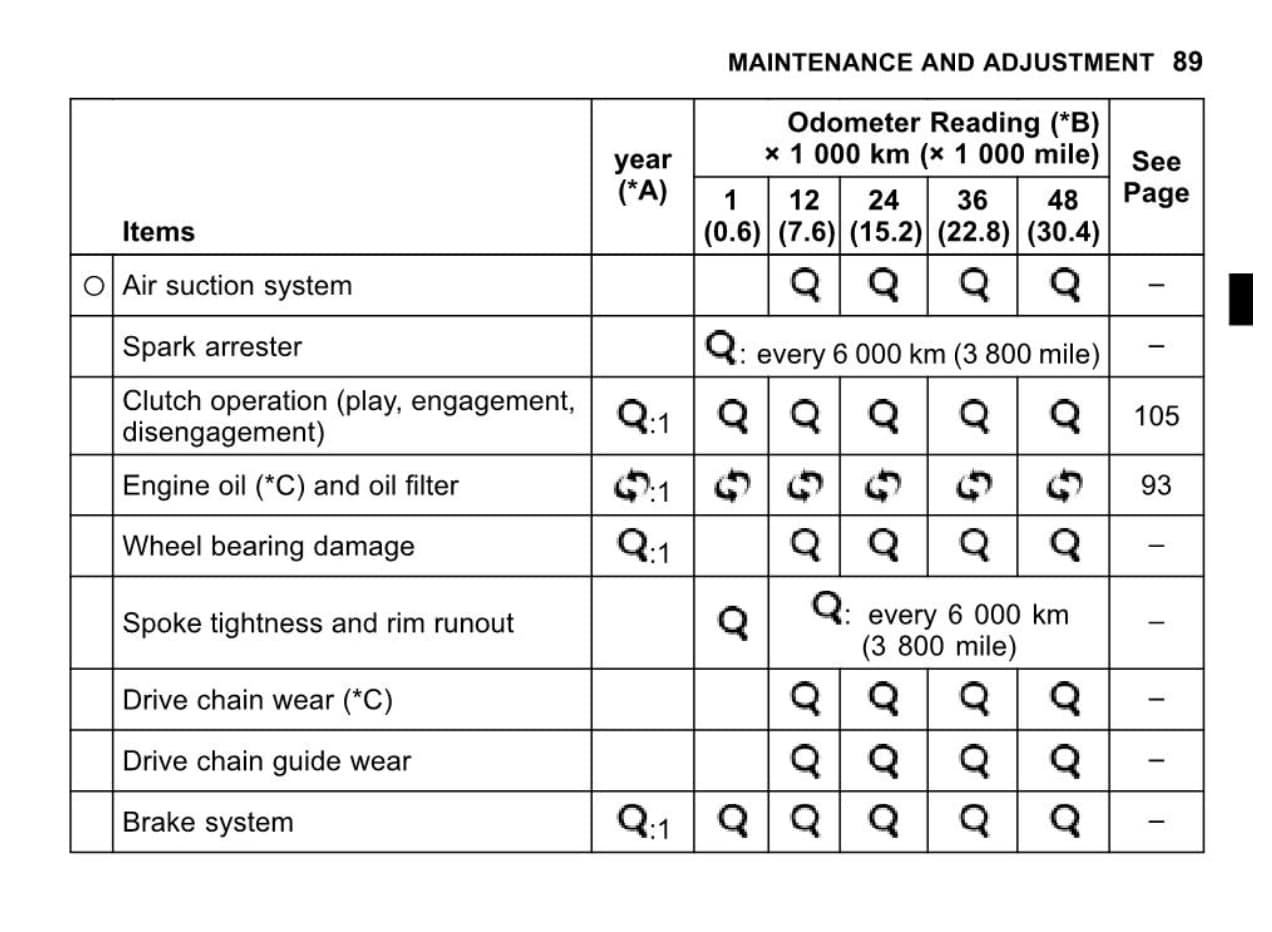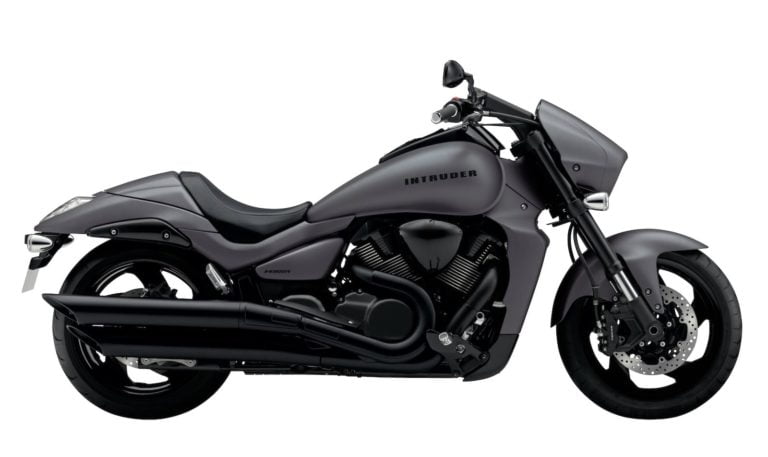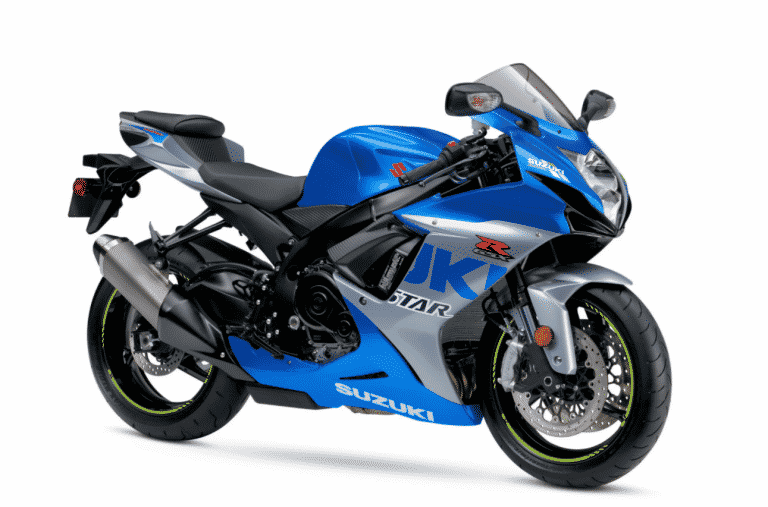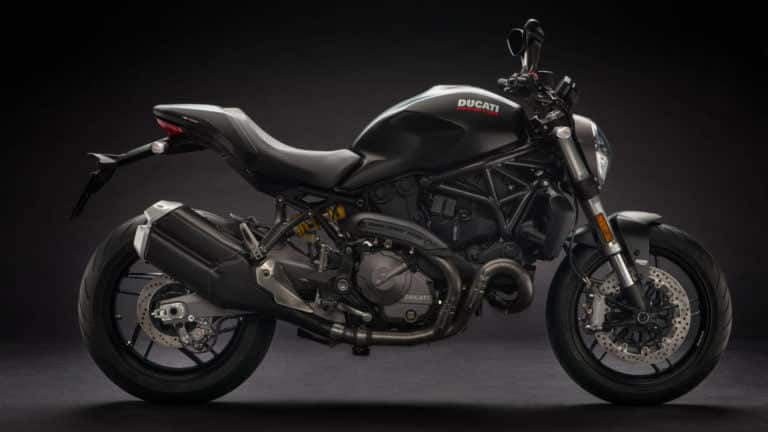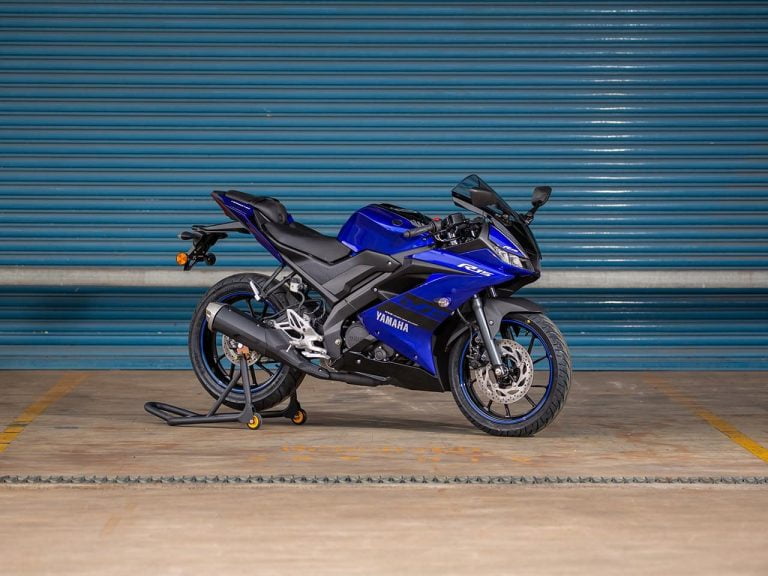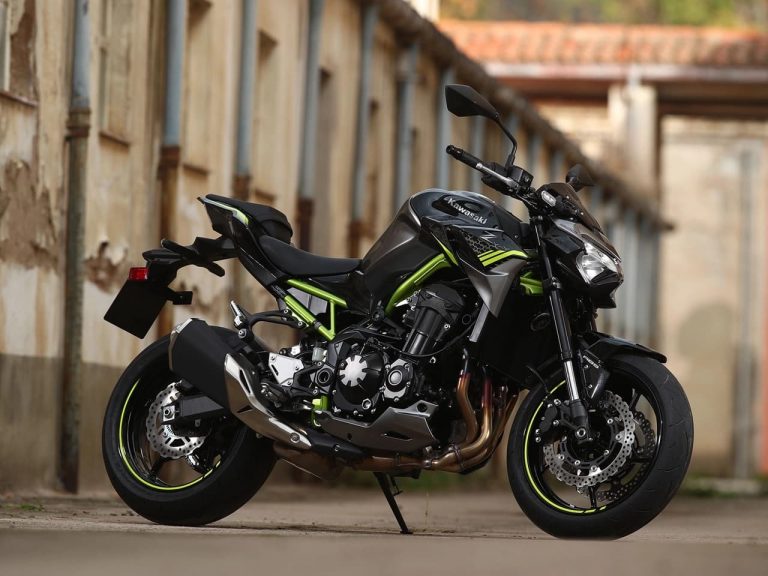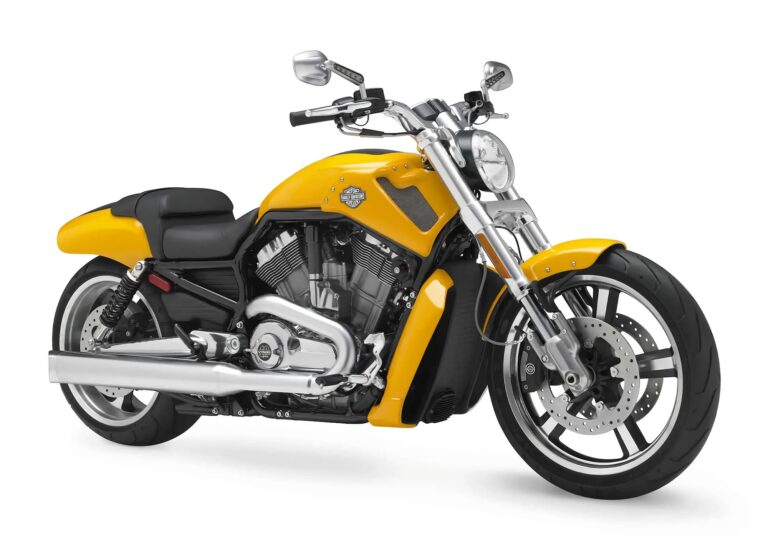Kawasaki KLX300 / SM (2021+) Maintenance Schedule and Service Intervals
This is the maintenance schedule and service interval for the Kawasaki KLX300 and KLX300SM, dual sport or supermoto variants of the single-cylinder motorcycle.
Kawasaki introduced the KLX300 and KLX300SM in 2021, both of which replaced the KLX250. Both bikes are powered by the same 292 cc dual overhead cam liquid-cooled 4V single which is borrowed from the KLX300R off-road bike.
Of course, the KLX300 and KLX300SM both have mirrors, lights, and other paraphernalia to make them street legal.
Kawasaki KLX300 Service Intervals
Overall, the Kawasaki KLX300-based motorcycles have 7500 mile / 12000 km or annual service intervals
At every service, change the engine oil and filter, change the spark plugs, and inspect the valve clearances.
Make sure to keep the coolant and brake fluid fresh, and regularly maintain the chain.
KLX300 vs KLX300SM differences
Here are the differences between both bikes. It’s essentially down to wheels, tires, brakes, and suspension. Aside from that, the frame, engine, and brakes are the same.
| Item | KLX300 (dual sport) | KLX300SM |
|---|---|---|
| Front wheel size | 21 inch | 17-inch |
| Rear wheel size | 18 inch | 17-inch |
| Front tire size | 3.00-21 51p | 110/70-17 M/C 54S |
| Rear tire size | 4.60-18 63P | 130.70-17 M/C 62S |
| Tire type | Dunlop D605 | IRC RX-01 |
| Front suspension | 43mm inverted fork, compression damping adjustable, 10-inch travel | 43mm inverted fork, compression damping adjustable, 9.1-inch travel |
| Rear suspension | Piggyback reservoir shock, fully adjustable, 230 mm / 9.1 inches travel | Piggyback reservoir shock, fully adjustable, 205 mm / 8.1 inches travel |
| Front brake | 250 mm disc, 2-piston caliper | 300 mm disc, 2-piston caliper |
Kawasaki KLX300 Maintenance
Below is the service information for the Kawasaki KLX300 (dual sport or supermoto).
The maintenance is broken up into three sections:
- Daily maintenance
- The service schedule
- The annual inspection checklist
Daily Maintenance
Below is the checklist for daily maintenance items for the KLX300 motorcycles.
You can check most of these as starting up the bike. But it’s still good to give it a visual once-over for leaks.
| Kawasaki KLX300 regular daily maintenance |
|---|
| Engine oil — Check adequate level / between lines |
| Tires — Check condition, and air pressure |
| Drive chain — Check slack and lubrication level (see below) |
| Bolts, nuts, and fasteners — Check all present, nothing loose |
| Brakes — Check brake pad wear, brake fluid level is between lines, and there’s no brake fluid leakage |
| Throttle — Check free play (2-3 mm) |
| Clutch — Check clutch lever free play, and smooth operation |
| Coolant — Check for no leakage, coolant level between lines |
| Engine kill switch — Ensure it stops engine |
| Side stand — Ensure it operates smoothly |
| Rear view mirrors — Adjust |
Service Schedule
Below is the service schedule for the Kawasaki KLX300.
Notes:
- Perform the earlier of the time-based or distance-based service items. E.g. do the inspection checklist every year or every 7600 miles / 12000 km.
- At the end of the maintenance schedule, keep following it in the pattern shown.
- A few items are recommended to be serviced between services.
| mi x 1000 | 0.6 | 7.6 | 15.2 | 22.8 | 30.4 | |
|---|---|---|---|---|---|---|
| km x 1000 | 1 | 12 | 24 | 36 | 48 | Every |
| Annual inspection checklist (see below) — Perform all items | ✓ | ✓ | ✓ | ✓ | ✓ | Year |
| Engine oil — Change (Kawasaki 10W-40) Torque drain bolt to 15 Nm / 11 lb-ft | ✓ | ✓ | ✓ | ✓ | ✓ | Year |
| Oil filter — Change (HF112) Tighten oil filter to 10 Nm / 7 lb-ft | ✓ | ✓ | ✓ | ✓ | ✓ | Year |
| Air filter — Inspect | ✓ | ✓ | ✓ | ✓ | ||
| Air filter — Change (KA-2409XD) | 2 years | |||||
| Spark plug — Change (CR8E) | ✓ | ✓ | ✓ | ✓ | ||
| Valve clearances — Check / Adjust | ✓ | ✓ | ✓ | ✓ | ||
| Idle speed — Check Target: 1 450 – 1 550 rpm | ✓ | ✓ | ✓ | ✓ | ✓ | |
| Fuel filter — Replace | ✓ | ✓ | ||||
| Evaporative emission control system — Check | ✓ | ✓ | ||||
| Brake fluid — Replace | ✓ | ✓ | 2 years | |||
| Rubber parts of brake master cylinder and calipers — Replace | ✓ | 4 years | ||||
| Brake hoses — Replace | 4 years | |||||
| Rear suspension — Lubricate | ✓ | ✓ | ||||
| Steering stem bearings — Lubricate | ✓ | ✓ | 2 years | |||
| Coolant — Replace | ✓ | 3 years | ||||
| Fuel hoses — Replace | 5 years | |||||
| Spark arrester (if fitted) — Inspect | 3800 miles / 6000 km | |||||
| Spoke tightness / rim runout — Inspect | 3800 miles / 6000 km | |||||
| Drive chain — Inspect wear | ✓ | ✓ | ✓ | ✓ | ||
| Drive chain guide — Inspect wear | ✓ | ✓ | ✓ | ✓ |
Annual Inspection Checklist
Below is the annual inspection checklist. Do these items every year, or otherwise, per the schedule above.
| Annual Inspection Checklist — Kawasaki KLX300 |
|---|
| Throttle control system — Inspect (play, smooth return, no drag) Target free play: 2-3mm (0.08-0.12 in) |
| Fuel system — Inspect |
| Cooling system — Inspect for leaks, hose condition, routing |
| Clutch operation — Check for correct play, engagement, disengagement Target free play: 2-3mm (0.08-0.12 in) |
| Wheel bearings — Inspect for damage / looseness Not as critical at break-in service |
| Brake system — Check, including for leaks, and correct functioning of lights |
| Brake operation — Check for effectiveness, play, no drag |
| Suspension system — Inspect for correct function, no drag Not as critical at break-in service |
| Steering — Check bearings for play |
| Electrical system (lights, charging) — Check for correct function |
| Chassis parts — Lubricate Not as critical at break-in service |
| Bolts, nuts, and fasteners — Check for condition, tightness |
Chain Maintenance
It’s important to maintain the chain on the KLX300, be it the supermoto or the dual sport. Both types of riding frequently expose the chain to stress, dirt, mud, and so on.
Use a good-quality chain lubricant like Motul chain paste, which is cheap and portable, or a Motul chain care kit which comes with a couple of handy tools to maintain the chain.
To check drive chain slack on the KLX300, check the maximum deflection of the chain in at its loosest point in the middle of the chain.
Target chain slack for the Kawasaki KLX300: 30-40 mm
To adjust the chain slack, you need wrenches and a large torque wrench for the rear axle nut.

- Put the motorcycle up on its stand
- Clean the chain if it’s dirty, and lubricate it if necessary.
- Remove the cotter pin from the rear axle nut and loosen the rear axle nut. And loosen the lock nuts for the chain adjuster nuts.
- Turn the left and right adjusters evenly to get to the target chain slack. Watch the notches (alignment indicators) to make sure alignment stays intact.
- Keep checking chain slack.
- When you get to target tension, tighten the axle to 110 Nm / 81 lb-ft of torque, and tighten the lock nuts to a quarter past seated.
- Put in a new cotter pin on the rear axle nut.
Wheels and Tires
The Kawasaki KLX300 Dual Sport has Dunlop D605 mixed-use tires on a 21/18 inch front/rear wheel set.
| Wheel | Tire size | Tire pressure (cold) |
|---|---|---|
| Front | 3.00-21 51p | 150 kPa / 1.5 bar / 22 psi |
| Rear | 4.60-18 63P | 150-175 kPa / 1.5-1.75 bar / 25 psi |
The Kawasaki KLX300SM has IRC RX-01 tires on 17-inch rims.
| Wheel | Tire size | Tire pressure (cold) |
|---|---|---|
| Front | 110/70-17 M/C 54S | 200 kPa / 2.0 bar / 29 psi |
| Rear | 130.70-17 M/C 62S | 225 kPa / 2.25 bar / 33 psi |
About the Kawasaki KLX300 (Dual Sport / SM)

Kawasaki released the KLX300 (in both dual sport and supermoto variants) in 2021, replacing the outgoing KLX250. Both motorcycles share the same foundation — a dual sport-style chassis, a 292-cc single-cylinder fuel-injected four-valve motor, and a six-speed gearbox and chain drive. The two motorcycles differ primarily in their suspension and wheel/tyre setups, but other than that are the same, and thus share an owner’s manual and general maintenance schedule.
The Kawasaki KLX300 has a 292cc engine, which is a significant step up from the 249 cc of its predecessor. This engine is liquid-cooled and benefits from fuel injection. Other refinements include slimmer-profile radiators, a hotter cam, optimized ignition timing, a new engine balancer, and taller gearing.
The Kawasaki KLX300SM, the supermoto variant, is particularly intriguing. Supermotos are essentially dirt bikes adapted for on-road use, and they combine the best of both worlds. They’re lightweight, nimble, and offer an unmatched level of agility, especially on twisty roads.
The KLX300SM, with its 17-inch wheels, is a hoot to ride on both twisty back roads and tight racetracks, with its torque-rich engine and very low weight.
Both bikes use a steel-perimeter frame and an aluminum swingarm. The front suspension is a 43mm cartridge-style USD fork with 16-way adjustable compression damping, the dual sport variant having slightly more travel in the suspension.
The rear shock is fully adjustable, offering preload adjustment along with 20-way compression and 30-way rebound damping adjustments. The LCD digital dash is simple and straightforward, providing all the essential information without any unnecessary frills.
The Kawasaki KLX300SM stands out with its 17-inch spoke wheels and sporty IRC Road Winner RX-01 tires, which have improved agility and grip on asphalt compared to average dual-sport tires. The suspension on the supermoto is also lowered by an inch and has stiffer springs, refining its handling for sport riding.
In terms of braking, the Kawasaki KLX300SM has a larger 300mm semi-floating front disc, compared to the 250mm disc on the KLX300 Dual Sport. The supermoto also has a few styling differences, such as a smaller, angular front fender and more aerodynamic mirrors.

Reference — Manual screenshots for the Kawasaki KLX300
The above information came from official documentation from Kawasaki, including the owner’s manual.
See screenshots from the owner’s manual.
You can view manuals for Kawasaki motorcycles here.
